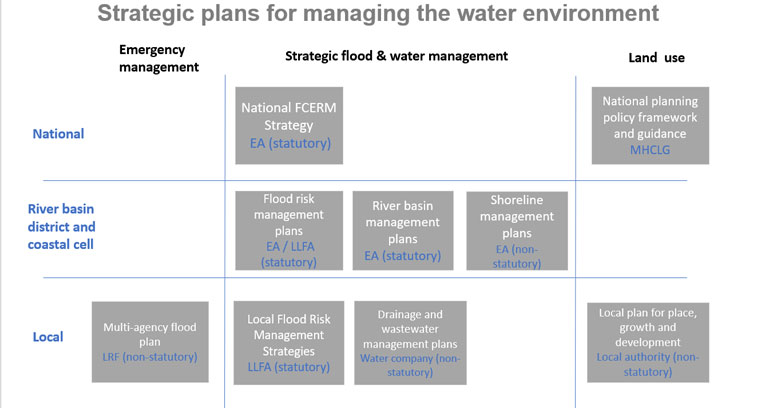Flood risk is managed by a range of authorities across England, each with a range of responsibilities dependent on the type of flood risk and the function they perform.
Managing flood risk
Flooding can occur from a range of sources and is categorised into different types. The management of each type of flooding falls under the responsibility of different organisations, depending on geographical location and their role in managing water related issues. For example; the Environment Agency has a Strategic Overview of surface water flooding, but the local management of surface water flood risk is the responsibility of local organisations such as Lead Local Flood Authorities or specific wastewater companies on foul sewer flooding matters.
The management of flooding is complex, as a number of sources can combine, requiring organisations to work collaboratively to help manage the risks. Flood risk management plans help organisations work together to understand where flood risk might occur, enabling them put in place measures to reduce the risk or to help people respond and to plan for the future.
The Government has established policy and regulations to ensure that flooding from all sources is managed, clearly setting out the role that each organisation plays and expectations of them. The Environment Agency produce a National Flood and Coastal Risk Management Strategy for England, which sets actions needed to improve flood and coastal risks management on a five yearly cycle.


